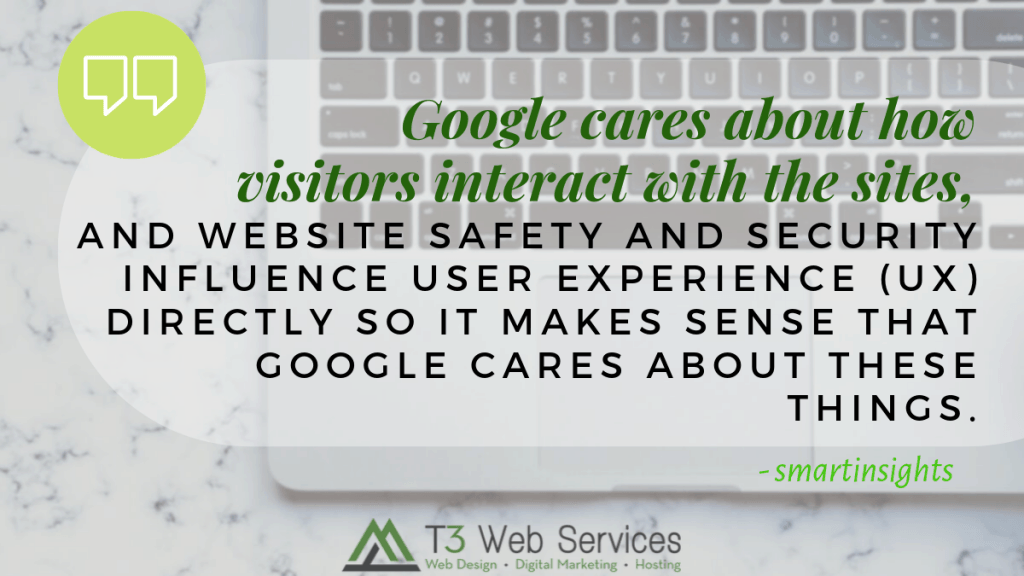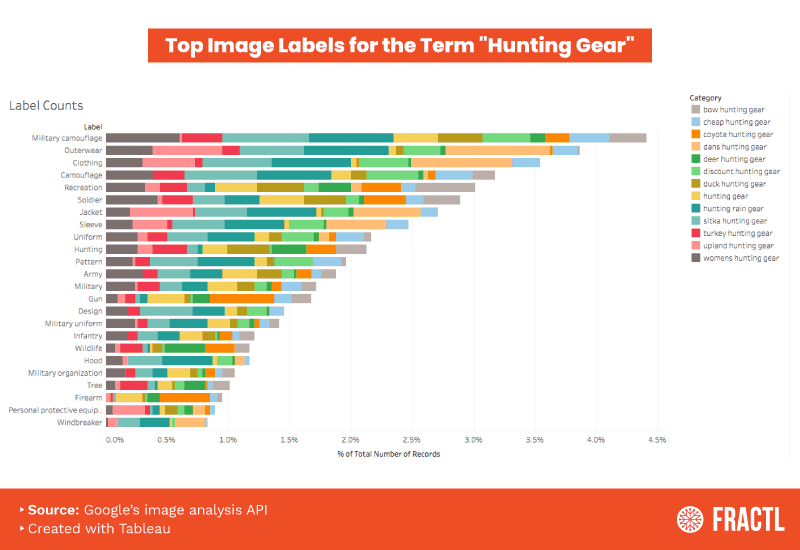New Opportunities for Image SEO: How to Leverage Machine Vision for Strategic Wins
Taking advantage of images and thumbnails in your search results could be a great opportunity to increase organic traffic. Image SEO might be a neglected area despite the fact that images have an enormous influence on the users. Here are some great insights on how to utilize image SEO and to realize its potential.

The first, and perhaps most actionable, analysis the API can be used for is in labeling images. It utilizes state-of-the-art image recognition models to parse each image and return labels for everything within that image it can identify. Most images had between 4 and 10 identifiable objects contained within them. For the “hunting gear” related keywords listed above, this was the distribution of labels:
At a high level, this gives us plenty of information about Google’s understanding of what images that rank for these terms should depict. A few takeaways:
* The top ranking images across all 13 of these top keywords have a pretty even distribution across labels.
*Clothing, and specifically camouflage, are highly represented, with nearly 5% of all images containing camo-style clothing. Now, perhaps this seems obvious, but it’s instructive. Including images in your blog posts related to these hunting keywords with images containing camo gear likely gives you improved likelihood of having one of your images included in top ranking image results.
*Outdoor labels are also overrepresented: wildlife, trees, plants, animals, etc. Images of hunters in camo, out in the wild, and with animals near them are disproportionately represented.
Are you losing your SEO rankings due to poor website security?
How awesome is it that whenever you come across a website where you don’t feel lost and you can smoothly navigate it as you please, you feel like an online royalty for the day?
Sitemaps have a great role in that customer experience and it helps your website visitors to get what they need..and in turn may convert to sales.

Google considers the association of each brand and website before deciding how qualified they are to receive credible traffic. Therefore, discrediting a website is easy, as all it takes is posting a few automated spam comments in the blog section.
How to prevent this? Do the following:
> Make sure the ‘nofollow’ attribute is added to links mentioned in comments (WordPress does this automatically, you need to check for any other CMS you may be using).
> Install plugins such as Akismet to prevent spam comments.
> Put in manual process checks to ensure user-generated content isn’t spamming your website.How can you keep your website safe for human users?
Apart from SSL and blocking bots, you need to consider your security plugins that are in place right now. When was the last time your team updated the plugins? Older versions are vulnerable to bots, malware attacks, and hacks. Monitor your website frequently and set up firewalls to block dubious users permanently from your site.
Google Lets Site Owners Customize Their Search Results Snippets
Learn more about how your website will be previewed in search results as Google has now introduced methods that use robots meta tags as well a brand new type of HTML attribute. More information will be spilled on this article as it answers questions on whether there would be changes on search rankings and more.

Google is giving site owners the ability to customize how their content is previewed in search results.
By default, Google has always generated search snippets according to the users’ queries and what types of devices they’re using.
However, there was previously no room for customization – it was only possible to allow a textual snippet or not allow one.
Now, Google is introducing multiple methods that allow for more fine-grained configuration of the preview content shown for web pages.
These methods include using robots meta tags as well as a brand new type of HTML attribute.This update will only affect how snippets are displayed in search results. Google confirms these settings will have no impact on search rankings.
Depending on how a site owner chooses to configure these settings there may be an impact on CTR, which could then impact traffic. But that is not related to search rankings.
7 Reasons Why an HTML Sitemap Is a Must-Have
Aside from maintaining keyword strategies, you might be missing out on a lot if you are overlooking website safety and security. Don’t wait until your website is threatened with hackers. Making your website secured is a big investment that you could benefit from in the long run.

Why You Should Leverage HTML Sitemaps
While you may already use an XML sitemap – and some insist that an HTML sitemap is no longer necessary – here are seven reasons to add (or keep) an HTML sitemap.
1. Organize Large Websites
2. Serve as a Project Manager & Architect
3. Highlight the Website’s Purpose
4. Speed the Work of Search Engine Crawlers
5. Increase Search Engine Visibility
6. Enable Page Links in a Natural Way to Drive Visitors
7. Identify the Areas Where Site Navigation Could Improve
After developing the HTML sitemap, don’t forget to put a link on your website that is easy to find.
You can either put the link at the top, as part of a sidebar or in a footer menu that continues to be accessible as visitors move from page to page.
However you look at it, an HTML sitemap is an easy way to get huge benefits without a lot of effort.



Leave a Reply